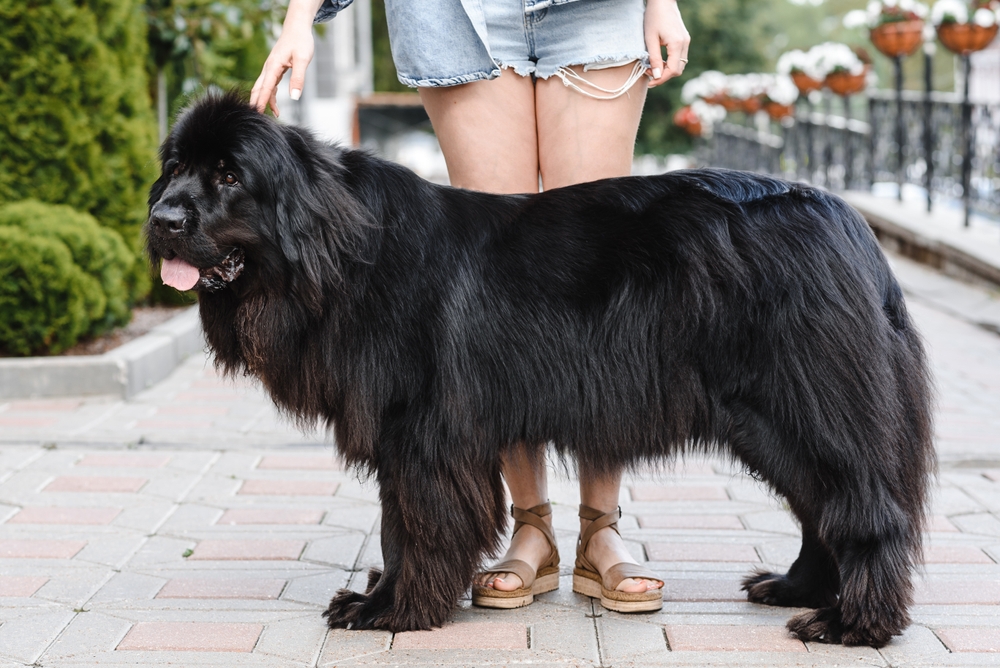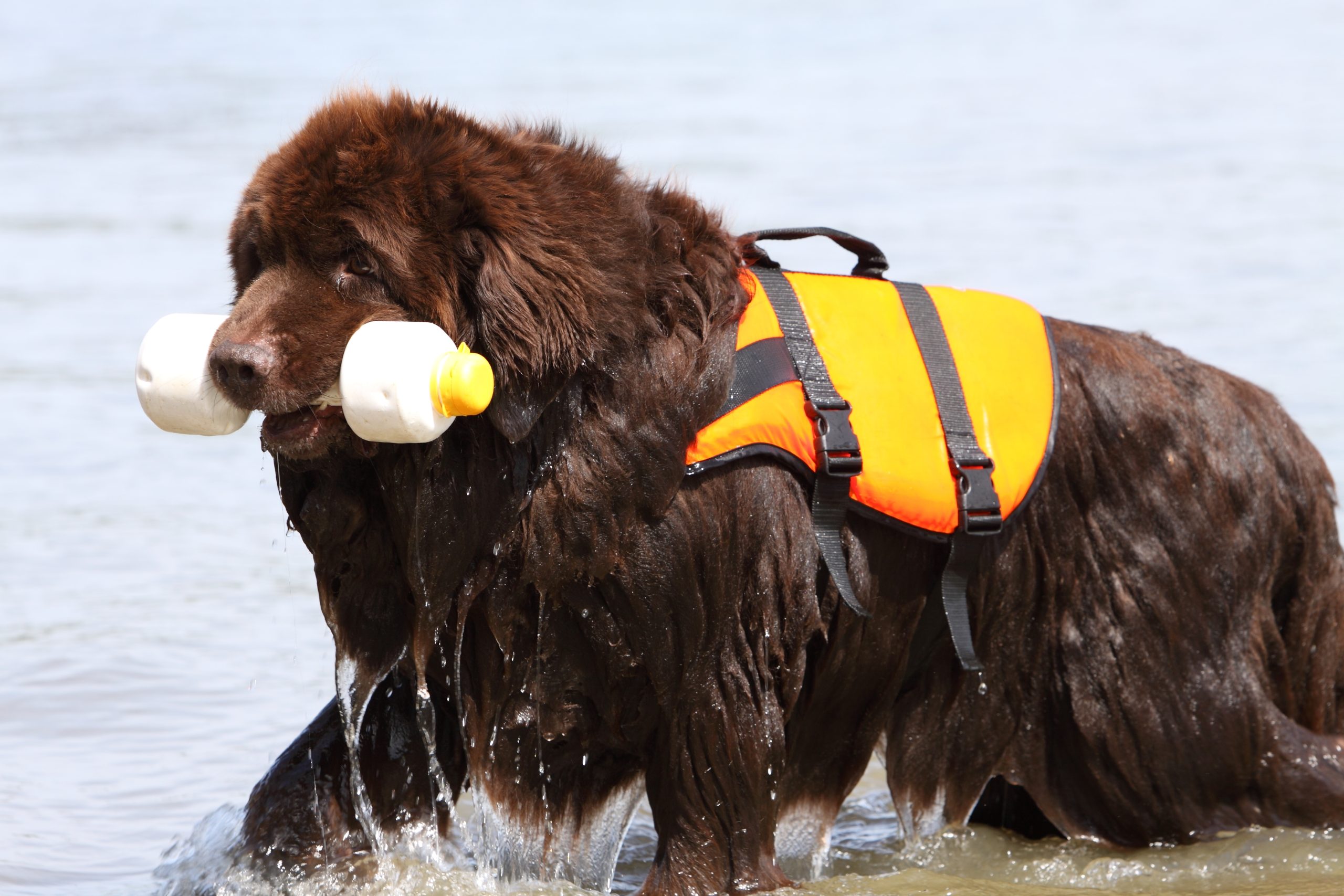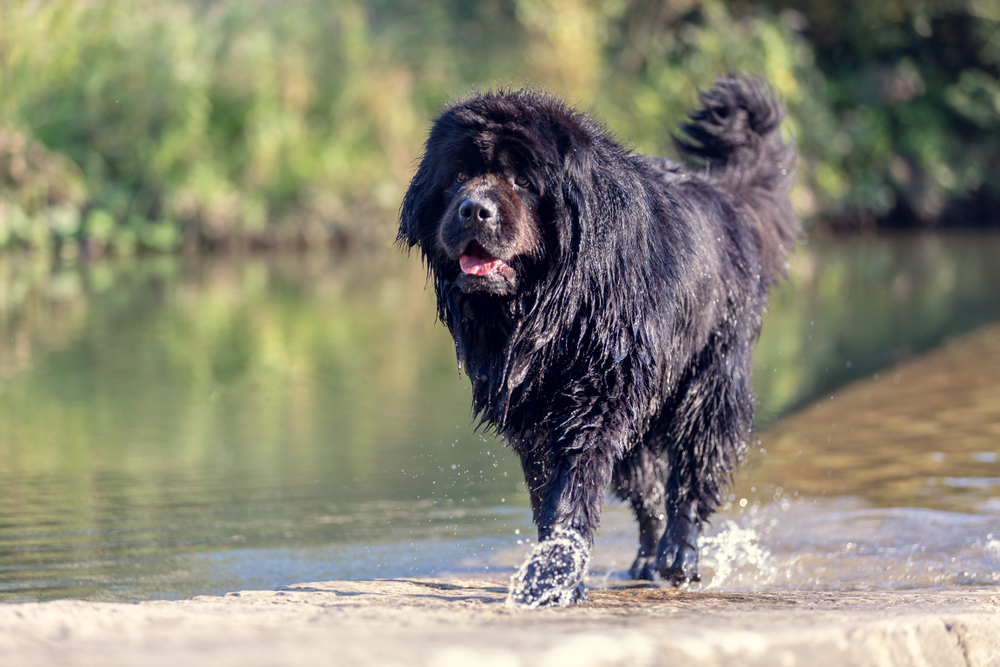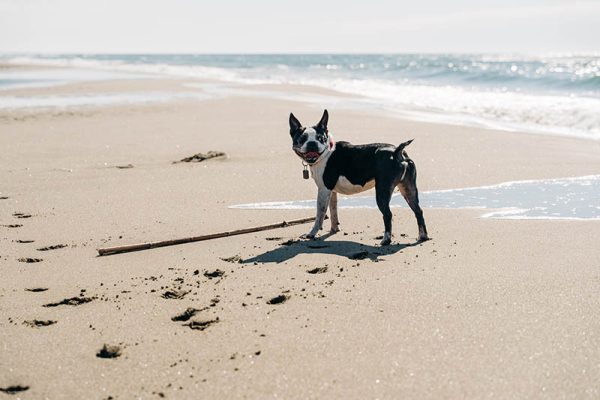In this article
Newfoundland dogs are known for their massive size, gentle nature, and exceptional swimming abilities. While their friendly demeanor and gentle temperament are well-known, many people wonder how protective Newfoundlands are.
The short answer is that they are quite protective and will jump in to help if they detect danger, but they don’t make ideal guard dogs. Keep reading for an explanation and other interesting facts to help you understand these dogs better.

Characteristics of Newfoundland Dogs
Originally bred as working dogs in Newfoundland and Labrador, Canada, their jobs included water rescues and hauling nets for fishermen. Owners often call them gentle giants due to their large size and gentle nature. Their temperament makes them excellent family pets and therapy dogs. They are generally not aggressive toward people or pets but are protective of their families and will go to great lengths to ensure their safety if they sense any danger.
Protective Instincts
While Newfoundland dogs are not typically aggressive, they possess a strong protective instinct. They are highly intuitive and can sense when their family members are in danger or distress. This instinct, combined with their impressive size and strength, makes them excellent protectors in certain situations.
Intelligence
While Newfoundlands have protective instincts, they are generally not aggressive toward people or other animals. However, they are intelligent and can differentiate between threats and harmless situations. This is important if you’re considering their role as family pets or guard dogs.


What Type of Protective Behavior Do Newfoundland Dogs Exhibit?
1. Vigilance
Newfoundland dogs are naturally watchful and alert. They will often monitor their surroundings, especially when they sense potential danger. Their vigilance enables them to detect any suspicious activity or intruders.
2. Intimidation
The sheer size of Newfoundlands can be intimidating to strangers or potential threats. Their massive presence alone can be a deterrent, as many individuals would think twice before approaching a large dog like a Newfoundland.
3. Vocalization
When Newfoundland dogs sense a threat or perceive danger, they may bark or growl as a warning sign. Their deep, booming bark can be intimidating, deterring intruders or potential threats. It can also help notify family members that there might be a problem.

4. Physical Intervention
In extreme cases, when their family members are in immediate danger, Newfoundland dogs may use their strength and size to physically intervene, protect their loved ones, and ward off potential attackers.

Why Newfoundlands May Not Make Good Guard Dogs
While Newfoundlands can be protective, they may not be the best choice as traditional guard dogs. Their friendly nature and lack of aggression make them less likely to be effective in deterring intruders solely through intimidation, and they will likely let strangers enter the property if they don’t sense any immediate danger.
Additionally, their size and strength may pose challenges even in friendly situations, as they may inadvertently cause harm or injury to individuals who are not actual threats, especially children and toddlers that they can easily knock over.
Protective Role in Water
Newfoundland dogs excel in water rescues and have a strong affinity for swimming. Their webbed feet and thick, water-resistant coat make them well-suited for water-related activities, and they can swim a long distance. For water-based emergencies, such as boating or swimming accidents, Newfoundlands can showcase their protective instincts by rescuing individuals in distress and bringing them to safety.
Of course, water rescue is a skill that needs to be trained beforehand, but this breed wins all the awards.


Other Interesting Facts About Newfoundland Dogs
- The Newfoundland is one of the largest dog breeds. Adult males can weigh 130–150 pounds, while females typically weigh between 100 and 120.
- Newfoundland dogs are renowned for their lifesaving abilities in the water. Their strong swimming skills, webbed feet, and instinct for water rescue make them excellent lifeguards. They can save people from drowning by pulling them to safety or acting as floating support until help arrives.
- Newfoundland dogs have a dense, water-resistant double coat. The outer coat is coarse and oily, while the inner coat is soft and insulating.
- While Newfoundlands come in various colors, including brown, gray, and Landseer (black and white), black is the most common color.
- They are highly protective of their human family members, and they are often called “nanny dogs” due to their watchful and caring behavior around kids.
- Many kennel clubs recognize the Landseer Newfoundland as a separate color variety. They get their name from British painter Sir Edwin Landseer, who often depicted these dogs in his artwork.
- Like many large breeds, Newfoundland dogs can be prone to certain health issues, including hip and elbow dysplasia, an increased susceptibility to bloat, and heart problems. Regular vet check-ups, a balanced diet, and exercise can help maintain their overall health.

Summary
Newfoundland dogs will fiercely protect their family members, especially children, when they sense danger. They are also good at protecting people from danger in the water and can pull people to safety or act as a flotation device until help arrives. Their massive size can also help scare off potential intruders, but their friendly nature won’t do much to stop them otherwise, so they don’t make good guard dogs. That said, they will usually bark to let their owners know that someone is in the yard.
Featured Image Credit: rzoze19, shutterstock




















